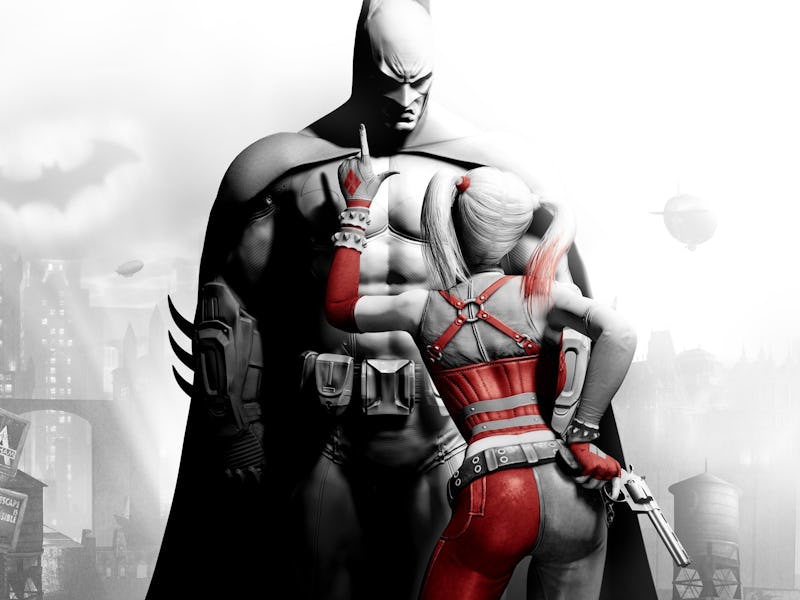Harley Quinn and Batman Should Share This Moment in 'Suicide Squad'
One of the best scenes in 'Batman: The Animated Series' highlights the Dark Knight's light side.

Batman’s ubiquity in popular culture means he is many things to many people. He’s a vengeful crusader, an intelligent detective, a formidable warrior, a goofball, a symbol of hope, or a blaring condemnation for vigilantism. But one of the few things Batman is hardly ever, especially in modern cinema, is kind. One moment in the classic Batman: The Animated Series shows exactly how he could be.
In the third season episode “Harley’s Holiday,” Joker’s favorite groupie Harley Quinn is given a clean bill of health from Arkham Asylum and a fresh start in Gotham City. Unlike most of the city’s rogues, Harley legitimately wants to fit in, to be a good and productive citizen once more. Clocking in at barely a half hour, of course her adjustment goes off the rails super quick when she mistakes being arrested and unwittingly kidnaps a U.S. General’s daughter.
After some hellish action, Batman stops Harley from falling to her death from a rooftop and takes her back to Arkham Asylum. She won’t be in for long, the woman she “kidnapped” dropped charges after learning from Harley how sincere she is at being done with crime. She just needs more time.
Escorted to her cell, Harley asks Batsy why he bothered to help her at all, risking himself for somebody who’s “never given you anything but trouble.” Without skipping a beat, Batman — or Bruce Wayne — exhibits the most human moment he’s ever shown another human being, be it in a comic book page or on the big screen.
“I know what it’s like to try to rebuild a life,” he says. Handing her the dress she bought but the police thought she stole, he tells her simply, “I had a bad day too, once.”
In 1939, Bill Finger and Gardner Fox wrote Detective Comics #33, cementing into American pop mythology one of the most enduring tales ever given to a fictional character: One night in a dark Gotham City alley, millionaire Bruce Wayne’s parents were shot dead by a petty criminal. Divorced from its time and place, it’s a sad story, but unremarkable. What makes Batman so vengeful when Superman is the last of his race? Why bother when Spider-Man lost his Uncle Ben as a consequence to his own foolishness? The answer: It was a desperate time.
Art doesn’t exist in a vacuum. In the middle of America’s most tumultuous period where the outlook was permanently grim, Batman’s origin spoke on a visceral level to its young and impressionable audience suffering daily from a broken economy. How Bruce becomes Batman illustrates plainly: Nothing is safe, and no one is sacred. Wealth can’t shield from the wicked and the desperate. This was learned by kids who worked hard labor for weeks to save pennies just to buy ten cent comic books.
No matter the modern criticisms Batman’s quest to rid his city of its ills resonates for those who, whether by a corrupt government or chaotic human nature, feel inexplicably powerless and powerful at once. Filmmakers and comic book artists have tapped into the dark, ugly side of his tragedy for so long and continue to do so. Christopher Nolan has delivered the definitive cinematic portrayal in Batman Begins, and Zack Snyder proposes to redefine that in the upcoming Batman v. Superman: Dawn of Justice. All of these Batmen have been gruff, brooding warriors who dwell in their own misery, alone, and only with others begrudgingly.
Yet, decades ago, here was a cartoon where Batman doesn’t exercise brutal justice nor dark vengeance. With a pink dress and soft words, Batman shows a compassion and kindness to a sworn enemy. His actions didn’t come from that tragedy, they came in spite of them.
I wish he did that more often. Maybe he will, in Suicide Squad.